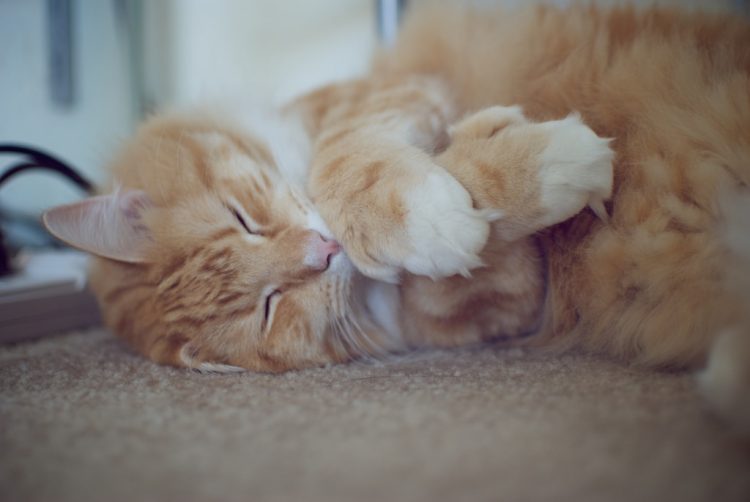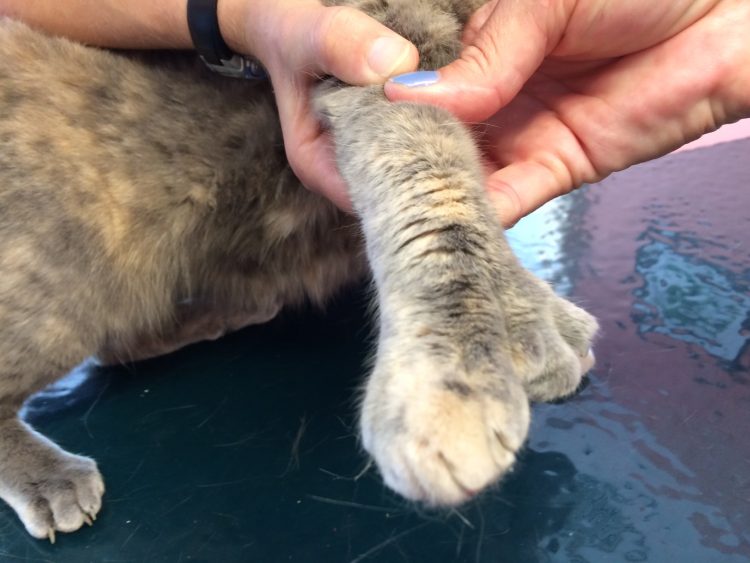
This pet health content was written by a veterinarian, Dr. Debora Lichtenberg, VMD. It was reviewed for accuracy by Dr. Pippa Elliott, BVMS, MRCVS, and was last updated on July 5, 2024

Introduction to Polydactyl Cats
Polydactyly.
A name for a parrot? Poking fun at a girl named Polly? No — but what a great word.
Polydactyl cats are fascinating creatures with a congenital, physical anomaly that results in having more than the normal number of toes. This condition is quite common in cats, especially along the East Coast of North America, particularly in Massachusetts, where I practice.
Understanding Polydactyl Cats
- Polydactyly is a congenital anomaly.
- It results in cats having more than the normal number of toes.
- Polydactyl cats are commonly found on the East Coast of North America, especially in Massachusetts.
For more detailed information, you can visit this Vetstreet article on polydactyl cats.
A Little History of Polydactyl Cats
Polydactyl cats have always been popular as ships’ cats. Several outlets report that the mutation spread widely due to ships originating in Boston.
- Sailors believed the extra toes gave these cats greater climbing ability and better rodent hunting skills.
- Sailors also thought they were good luck charms at sea.
Most polydactyl cats I see have great personalities, likely due to their lineage of being respected and pampered on the high seas.
If you take a trip to Key West, check out Ernest Hemingway’s estate, which is now a museum and home to many cats, about half of which are polydactyl. Hemingway was a famous lover of polydactyl cats. The well-loved cats around the grounds often look like they’re sporting boxing gloves or mittens. You can learn more about them at the Ernest Hemingway’s estate.
Special Considerations for Extra Toes
A normal cat has 5 toes in front and 4 in back, totaling 18 toes.
- Most polydactyl cats have the mutation only in the front, with an average of 2-3 additional toes.
- Some cats have been reported to have up to 28 toes.
These kitties tend to have a high “cute” factor because they look like they have “thumbs” or are wearing mittens, snowshoes, or fluffy slippers. However, depending on where the nails emerge from and the placement of the toes, you need to ensure the nails don’t cause a problem. Learn more about potential nail problems.

Monitoring Polydactyl Cats
Keep an Eye on Them
In a typical “thumb” polydactyl cat, the extra 1, 2, or 3 claws are placed where the 1 dewclaw normally would be. These claws never get worn down with average running, jumping, or tearing up of prized furniture, so they need to be monitored and clipped occasionally.
- There is often an extra claw between the “thumb” and the foot, which can grow around and become embedded in the foot or pad, causing pain and infection.
- I teach my clients how to keep these extra claws clipped or recommend removal of the claw, not the toe.
- If there are extra toes in the rear, certain mutations must be monitored more carefully than others. Some cats have toes hanging off above the foot, similar to a Great Pyrenees.
These kitties have a tendency to rip these in normal play or running and may require removal after a traumatic event.
Removing Claws for Safety
When a young cat comes in with abnormal and problem-causing extra claws, I discuss with the client that, during spay or neuter, it would be very easy to remove the offending claws. This can save the client from nail trims forever or prevent a severely infected foot from embedded claws or trauma.
- These cats go home with no bandages, and I emphasize that this procedure is absolutely not like a declaw. These claws are often smaller, may be growing aberrantly, and are never walked on, so recovery is quick and quite painless.
- Often, we are talking about removing only 2 claws.
By ensuring these extra toes are properly managed, we can prevent potential health issues and keep our beloved polydactyl cats happy and healthy.
Health Issues in Polydactyl Cats
Polydactyl cats, while unique and charming, can be prone to certain health issues due to their extra toes.
- Common Health Problems: Overgrown nails, embedded claws, and infections are common in polydactyl cats if their extra toes are not properly cared for. Regular nail trims are essential.
- Preventive Care: Routine check-ups with your veterinarian can help prevent and address any issues. Ensure your cat’s paws are inspected regularly to catch any problems early.
This polydactyl cat seems to love the attention her big feet bring her:
Regular Care for Polydactyl Cats
Take a Good Look
Many cats today are spayed or neutered in shelters or at low-cost spay-and-neuter clinics. Unfortunately, the extra toes in polydactyl cats don’t seem to get enough attention.
Was YOUR Pet Food Recalled?
Check Now: Blue Buffalo • Science Diet • Purina • Wellness • 4health • Canine Carry Outs • Friskies • Taste of the Wild • See 200+ more brands…

- More and more older polydactyl cats come in with severely overgrown nails or painful infections. The clients are often clueless and feel terrible.
If you have a cat with mittens or thumbs, regularly check all the claws and note how and in which direction they are growing. Have your veterinarian explain how to keep an eye on your special polydactyl cat and trim the nails when necessary.
Mr. Hemingway must have done it. Well, perhaps he had a little help from his house staff. Proper nail care is essential to keep your polydactyl cat happy and healthy.
Myths and Facts About Polydactyl Cats
Polydactyl cats are surrounded by many myths and interesting facts.
- Myth: All polydactyl cats have 28 toes.
- Fact: While some can have up to 28 toes, most have only a few extra toes, primarily on their front paws.
- Myth: Polydactyl cats are rare.
- Fact: Polydactyl cats are quite common, especially along the East Coast of North America.
Final Thoughts
Polydactyl cats are unique and endearing, thanks to their extra toes. While they may require a bit more care, especially with nail trimming and regular paw inspections, their charming personalities and historical significance make them beloved pets. Whether you are fascinated by their genetic mutation, their rich history as ship cats, or the myths surrounding them, understanding and properly caring for polydactyl cats will ensure they lead happy and healthy lives.
By keeping an eye on their health, educating yourself on their needs, and seeking regular veterinary advice, you can enjoy the companionship of these special cats. Remember, each polydactyl cat is unique, and their extra toes add to their character and charm.
Frequently Asked Questions (FAQ)
How many toes do polydactyl cats have?
Polydactyl cats typically have 19-23 toes, but some can have up to 28.
What are polydactyl cats?
Polydactyl cats are cats born with more than the usual number of toes on one or more of their paws.
What causes polydactyl cats?
Polydactyl cats are caused by a genetic mutation that results in extra toes.
How rare are polydactyl cats?
Polydactyl cats are not particularly rare and are more commonly found along the East Coast of North America.
How much are polydactyl cats worth?
The worth of polydactyl cats varies, but they generally do not have a significantly higher value than other cats.
References
- “Polydactyl Cats.” The Spruce Pets. https://www.thesprucepets.com/polydactyl-cats-4175908
- “Polydactyl Cats.” PetMD. https://www.petmd.com/cat/general-health/polydactyl-cats
- “Polydactyl Cats: Facts and Myths.” Rover.com. https://www.rover.com/blog/polydactyl-cats/



